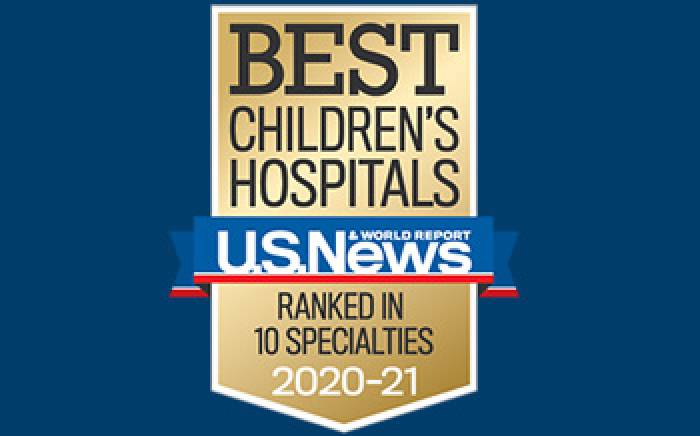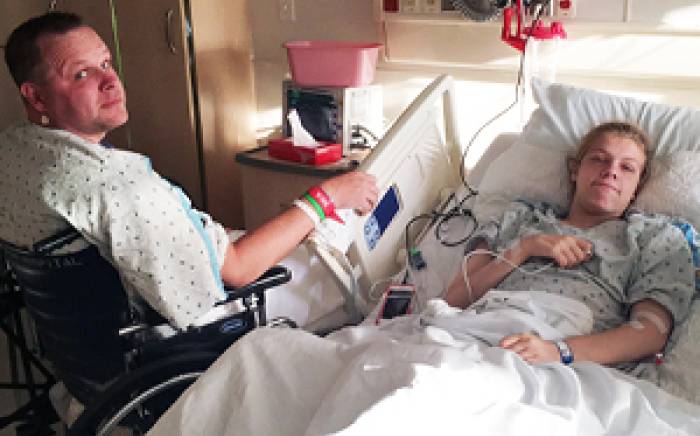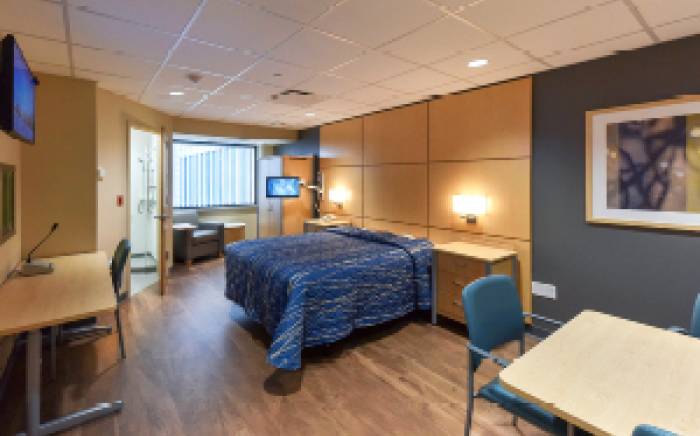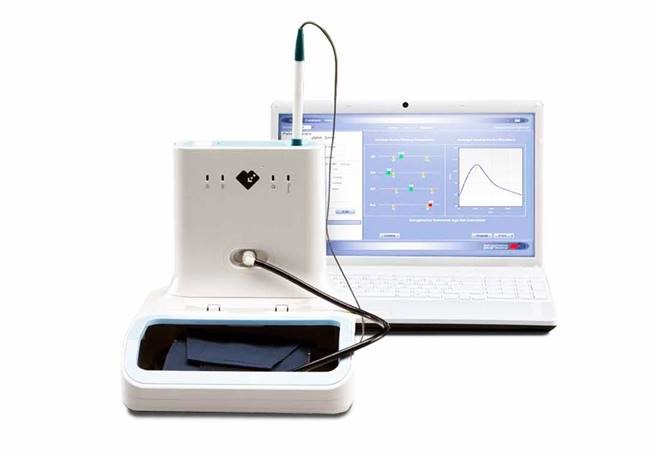 The Pediatric Hypertension Program at St. Louis Children’s Hospital now offers an advanced technology that has already proven effective as a diagnostic tool in adult patients with high blood pressure. The SphygmoCorÒ measures central blood pressure, the blood pressure at the aorta, which has been shown to better correlate with cardiac outcomes than standard peripheral cuff blood pressure readings.
The Pediatric Hypertension Program at St. Louis Children’s Hospital now offers an advanced technology that has already proven effective as a diagnostic tool in adult patients with high blood pressure. The SphygmoCorÒ measures central blood pressure, the blood pressure at the aorta, which has been shown to better correlate with cardiac outcomes than standard peripheral cuff blood pressure readings.
“Blood pressure is a function of how strongly the heart contracts and how tight the blood vessels are. The relative contributions of one to the other may be different in the peripheral blood vessels versus central blood vessels,” says Washington University physician Vikas Dharnidharka, MD, MPH, pediatric nephrologist at SLCH and director of the division of pediatric nephrology.
The SphygmoCor system calculates central blood pressure through a pulse wave analysis. During this measurement, a 10-second snapshot of the radial arterial pressure waveform is measured using a radial pressure sensor or tonometer. The device’s software obtains the ascending aortic pressure wave, from which a number of cardiovascular measurements are determined. These include central aortic systolic pressure, aortic augmentation index and the central pulse pressure.
“This innovative approach is not yet commonly used for children in the United States, but there are significant data in adults to show its value. We also have data on upper limits of central systolic blood pressure in children from studies done in other countries,” says Dr. Dharnidharka. “It’s an effective means of monitoring our pediatric patients with hypertension and ensuring they receive proper treatment. For instance, there are some concepts that certain classes of blood pressure medicine are more effective for treating central blood pressure than other classes. Or there may be instances where blood pressure medication is increased or decreased based on what is indicated by the central blood pressure, which may be different from the peripheral.”
According to nurse practitioner Brandy Markley, MSN, RN, CPNP, obtaining measurements for the pulse wave analysis is similar to how peripheral blood pressure is taken.
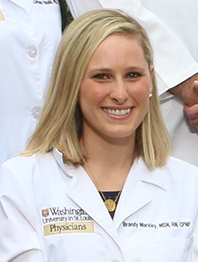 “In both instances, a cuff is placed on the arm. The difference with the SphygmoCor is that the cuff pumps up twice—the first time to measure blood pressure, the second time for the pulse wave measurement,” she says. “It lasts just a bit longer than taking a peripheral blood pressure. A bonus for many patients is that they can watch the numbers on the computer screen as the cuff inflates and deflates.”
“In both instances, a cuff is placed on the arm. The difference with the SphygmoCor is that the cuff pumps up twice—the first time to measure blood pressure, the second time for the pulse wave measurement,” she says. “It lasts just a bit longer than taking a peripheral blood pressure. A bonus for many patients is that they can watch the numbers on the computer screen as the cuff inflates and deflates.”
Pediatric nephrology is using SphygmoCor for three groups of patients: those already diagnosed with high blood pressure, those on dialysis and those with a kidney transplant.
“Obesity rates among children have exploded in recent years. As a result, it is estimated that today 6 to 9 percent of children have hypertension, compared to just 1 percent 30 years ago,” says Dr. Dharnidharka. “We need to provide the best possible care for these patients to help them avoid the consequences of high blood pressure like heart attack and stroke as young adults.”
Part of that prevention is conducting advanced research into pediatric hypertension, an area aided by the SphygmoCor’s ability to measure pulse wave velocity.
“Healthy blood vessels are elastic so that when the heart contracts and transmits a pulse wave through them, it travels to the tips of your fingers. Then the wave reflects back to the heart when the heart is ready for its next beat,” says Dr. Dharnidharka. “Diseased blood vessels—those previously seen in patients in their 60s and older—can have too high a pulse wave velocity that transmits back to the heart too quickly.”
A research project conducted in Dr. Dharnidharka’s division showed that children with high blood pressure have a higher pulse wave velocity than normal kids. “More importantly, we looked at obese children who didn’t have high blood pressure, and they also had a higher pulse wave velocity,” he says. “So obesity alone seems to be causing some degree of vessel disease. How to reverse that vessel disease is an unknown that we are researching.”
Dr. Dharnidharka notes that the added capability of measuring pulse wave analysis and pulse wave velocity simply strengthens an already strong pediatric nephrology program.
“In October, the American Academy of Pediatrics published a new set of guidelines for pediatric high blood pressure. They stressed more than ever before that 24-hour ambulatory blood pressure monitors should be the standard of care in pediatric nephrology programs,” he says. “We have been expanding our use of these monitors for a number of years, to the point of having 15 monitors available for our patients. Many programs may have just two or three. It’s another example of how committed we are to providing the best, most advanced care for our patients.”
To learn more about the Pediatric Hypertension Program or to speak with Dr. Dharnidharka, call Children's Direct at 800.678.HELP (4357).






